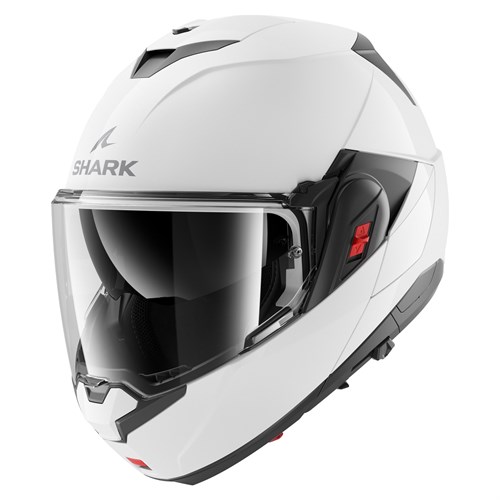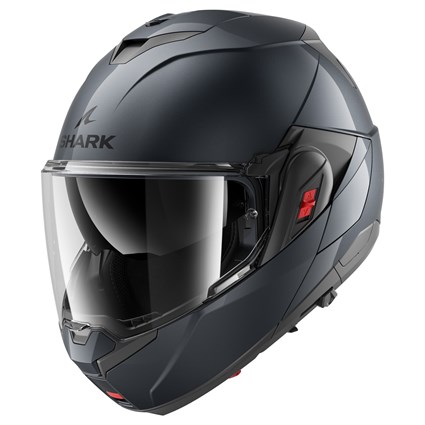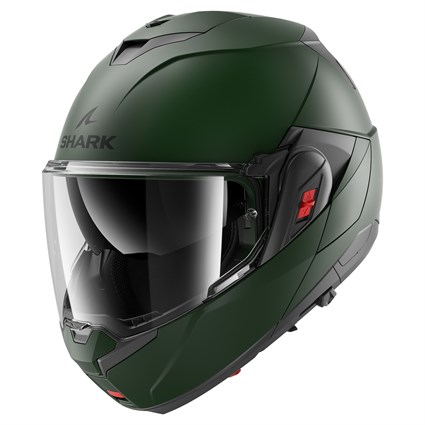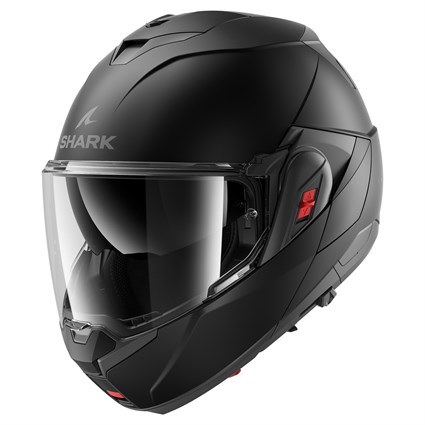- Menu
- JacketsMotorcycle Jackets
- HelmetsMotorcycle Helmets
- GlovesMotorcycle GlovesOther Categories
- BootsMotorcycle BootsOther Categories
- PantsMotorcycle PantsOther Categories
- JeansAll Motorcycle JeansOther Categories
- AccessoriesAccessoriesAccessories
- Ladies GearLadies Motorcycle Clothing
- Brands
- Sale
- Editorial
- Videos
- Sign In
- Register
Shark OXO helmet gloss white
(SRK2026)
£303.99
Shark OXO helmet gloss white
x
If any UK retailer is selling anything at a price that is lower than ours, we will beat that price by a full 10%.For terms and conditions, click here.

(SRK2026)
£303.99
Shark OXO helmet gloss white Product Information
For those who ride into Europe's big cities, 'flip-over' helmets have become somewhat ubiquitous. And indeed for the urban rider, a flip-over might just be the perfect helmet, combing the protection of a full-face helmet when you're on your way into town from the suburbs, with the cooling effects of an open-face helmet when you're inside the city limits.
Shark helmets has been producing flip-over lids since 2007. The original helmet was called the Evoline. A design upgrade earned the helmet a new name: the Evo-One. That helmet went through several iterations , not all of which were hugely successful. But with the need to upgrade to ECE 22-06, Shark decided to start afresh from a blank sheet of paper.
There's nothing particularly outstanding about the technical spec. of the new Shark OXO, as the company's new flip-over is called.
The shell is made from a material called Lexan. That's a fancy word for plastic. This is not the most sophisticated substrate for a helmet, but plastic helmets are good at absorbing the energy of an impact. Plastic, though, doesn't make for the strongest shells, when it comes to multiple impacts, for example.
The helmet comes in just two shell sizes. Now three shell sizes is the mark of a truly premium helmet, although it's still probably the case that most brands have two, including some upmarket ones like, for example, a Schuberth helmet.
The OXO comes in six different sizes; from XS to XXL. Interestingly, the helmet has six different eps sizes, which means that each helmet will fit differently. And I mention this because, in the outlying sizes, some helmet makers rely on the comfort liner to alter the internal fit.
The headliners on the OXO can be removed and washed, by the way, but don't come in different thicknesses. But the cheekpads do. In fact, in every size of helmet you get the option to fit up to five different thicknesses of cheekpad. And that's pretty impressive.
The internal facings are certainly comfortable. All the surfaces feel nice next to the skin, although we're not talking about the levels of sumptuousness of a Shoei helmet here.
To us, one of the most interesting differences between the old Evo-One helmet and the OXO is the way it fits. Frankly, the OXO's predecessor had a very idiosyncratic fit. The helmet was very wide, meaning that it revealed large open spaces above the cheekbones. It then tapered down quite aggressively to the chin, meaning that it often felt as though you were wearing a boxing head guard. The result was that the cheeks could be very tight, pinching the mouth, and making it nigh on impossible to chew gum. Or even talk! People got used to it, but there was no other helmet quite like it. We were never great fans of the fit, although the helmet's overall rounder shape did work well on those with wider heads.
Well, the OXO is very different.
The starting point is that it looks much more like a regular helmet. Okay, because of the lift-up chin bar it's a touch wider than some full-face helmets, but put it on and, from 10 paces, it just looks like any full-face helmet.
Now that's good, in our view. The helmet wears much more like a regular, full-face helmet too. There are no gaps above the cheeks. As a result, the OXO should be a pretty quiet helmet, we feel. And this is in contrast to the old Evo range of helmets, none of which were. Without doubt, however, the fit around the head is much more oval. Now we don't have a problem with this. But those who wore a Shark Evo because it was the only helmet that didn't pinch the sides of their skull may find that the OXO is not so accommodating.
Other stuff?
Well you get a chin vent and a brow vent, but they're pretty basic. One position, really, on both. Open or closed.
The outer visor doesn't look as though it's Class 1 optical quality, although it does come with an anti-fog coating. If that isn't up to the job, well you also get a Pinlock 70 in the box. Personally, I thought that Shark now put a 120 Pinlock in every box these days. A 70 Pinlock is cheaper for Shark, but it's not as effective in extreme conditions. I actually find this kind of nickel and diming a bit disappointing on such a high-profile brand
One of the things that Shark usually does better than the other manufacturers is detente mechanisms. But the main visor on the OXO has nothing in this regard, and I figure that this is a price you pay for having a flip-over chin bar, as the Scorpion equivalent is similarly deficient in this particular department.
By contrast, the drop down sun visor is very clever. It has five different 'click' positions, all of which can be released by depressing a button that sends the visor flying up into the shell.
The helmet, obviously, is both P and J rated, so can be ridden legally as either an open-face or a full-face helmet. There's a lock position that stops the chin bar from coming forward when it's in its rear position. It's part of ECE 22-06, but it's not something that is really necessary on a flip-over helmet.
Now the OXO, in truth, will stand or fall on the reliability of the chin bar's rotating mechanism. The truth is that I have not rotated it forward and back a million times in the way that I hope that Shark has. All I can say is that it feels tight and robust in the way that Shark's mechanisms never really have done in the past. It feels to me as though it's going to work well, but it's too early to be sure. We'll only really know that after the helmet has been in the market for a while.
There is, though, one thing that might not work for everybody. And it's the chin bar release mechanism. It's a little bit fiddly, and requires a pinching action with the thumb and forefinger to make it work. It's not horribly intuitive, and will take a bit of getting used to. I suspect it may be a bit tricky to use with heavy, winter gloves.
Finally, there's a range of integrated Sena comms. systems that can be fitted into the helmet. There's a more basic Bluetooth system for those who want to connect to a satnav or phone, or to talk with a pillion or another rider. And then there 's an all-singing-and-all-dancing Mesh system for those who ride in a larger group. Both have a 15 hour battery life, and a one-mile talk range. And both come with HD speakers. There is, I'm afraid, no Cardo option. Sticking a Cardo unit onto the shell is possible, but it won't be particularly easy to access.
What we can be fairly definitive about is that the OXO is a big step up from its predecessor. It feels more solid, better designed and better engineered. We think it looks much more like a regular helmet, and certainly it wears more like one.
The older Evo range of helmets was never particularly mainstream. They did give riders the option to ride with either an open-face helmet or a full-face helmet, but the truth was that the Evo helmets were not great to ride in. They were too noisy for motorway riding, a tad on the flimsy side, and not always particularly reliable. Well, the OXO looks and feels very different. In fact, it's clearly a better helmet.
As our regular customers know, if you want a flip up helmet we would recommend the Shoei Neotec 3 or Schuberth C5; but this is a different style of helmet. If it's a flip-over that you want, then the OXO needs to be on your shopping list. In fact, it should probably be at the top of it.
Specification
- Flip-over design
- Shell made from Lexan
- Six helmet sizes
- Two shell sizes
- Six different eps sizes
- Removable headliners and cheekpads
- Five different thicknesses of cheekpad
- Lock position for chin bar
- Drop-down sun visor with five lock positions
- Outer visor with anti-fog coating
- Pinlock 70 in the box
- Micrometric strap adjuster
- Facility to take two integrated comms. systems
Warranty
Shark helmets have a five year warranty





























































